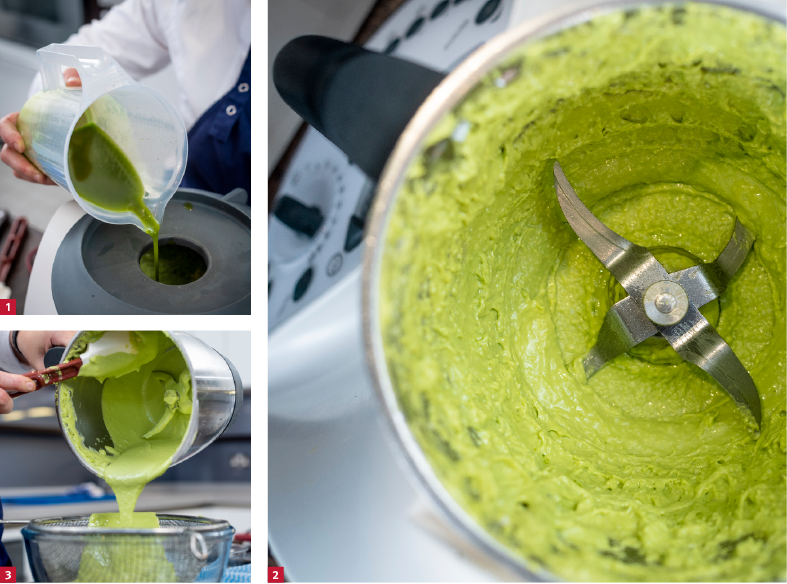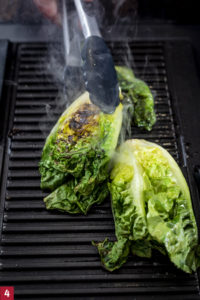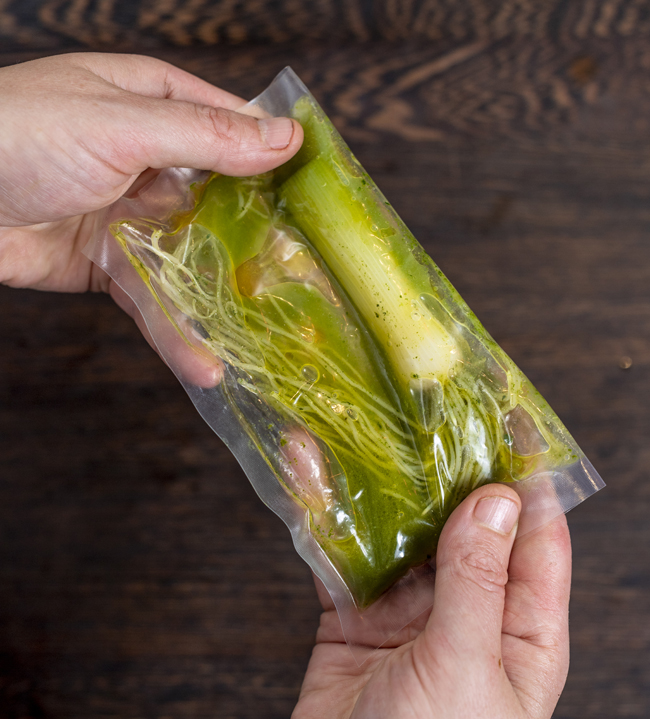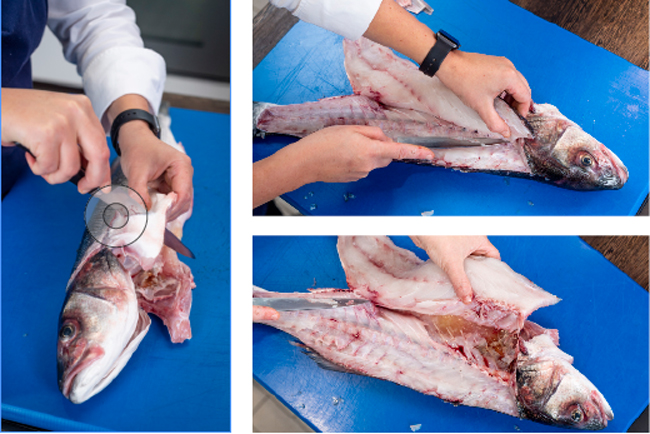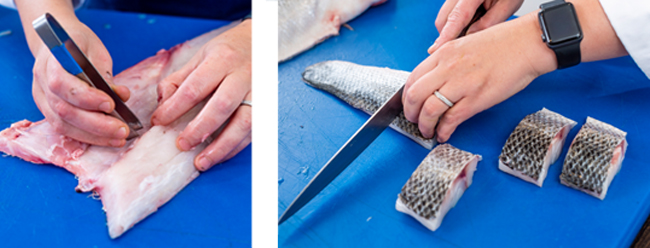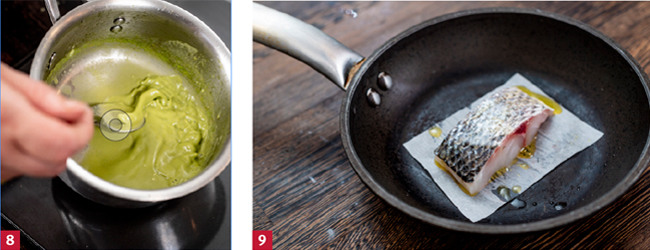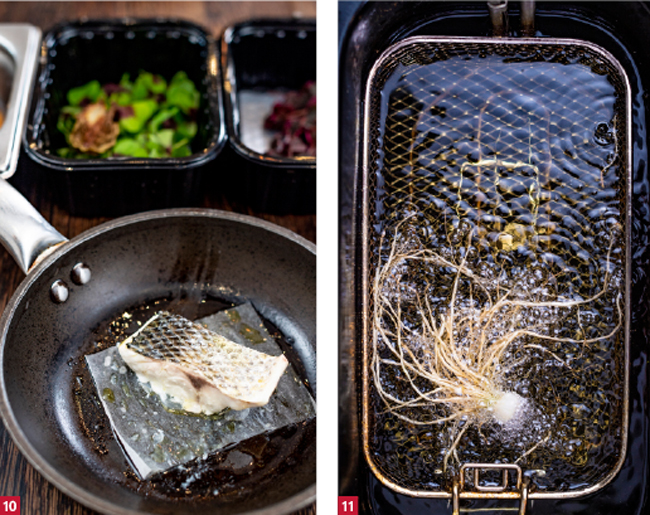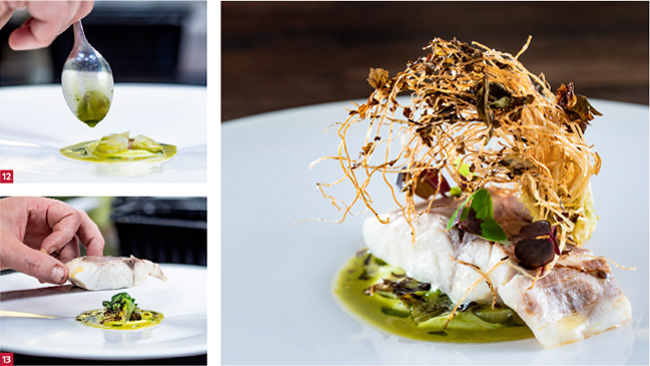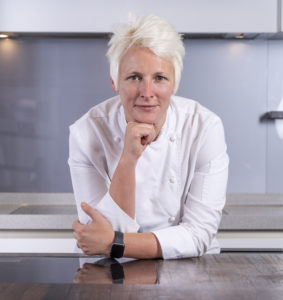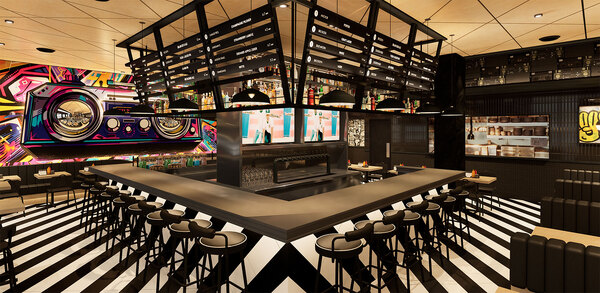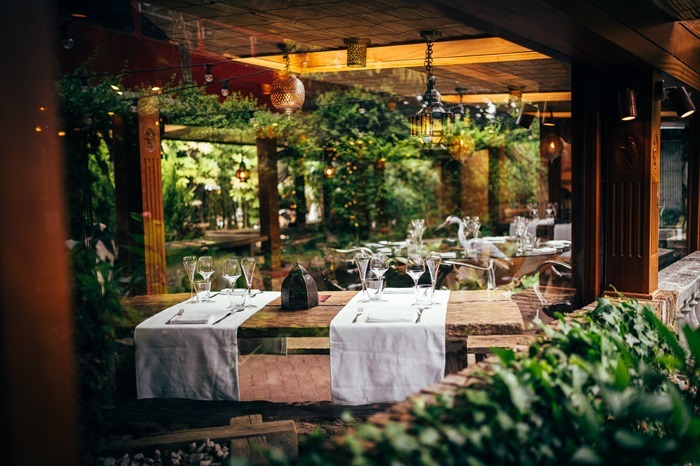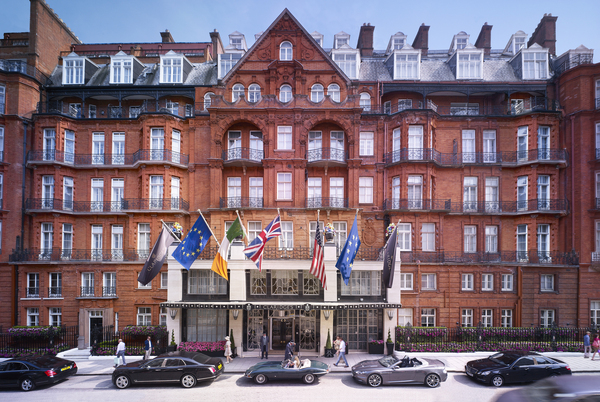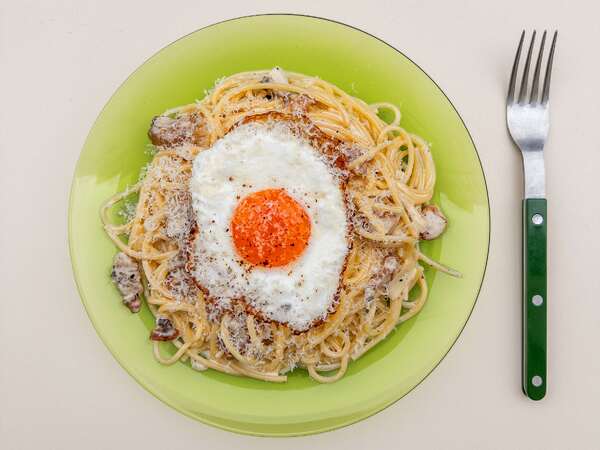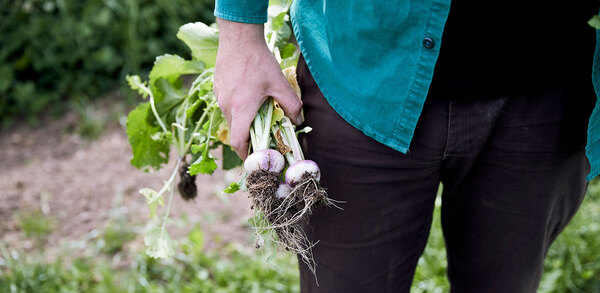A new leaf: a lettuce masterclass with Lisa Goodwin-Allen
Lisa Goodwin-Allen, head chef at Lancashire's Northcote, is rethinking the approach to traditional ingredients. Michael Raffael reports
For the past three years, Northcote Manor has been developing and expanding its orchard and kitchen garden. It's not self-sufficient in fruit and vegetables, and that isn't part of the long-term plan. However, it is changing the way chef Lisa Goodwin-Allen cooks, multiplying options for the kitchen.
The hotel already grows all its own herbs and the option to experiment with less common cultivars is open-ended. Goodwin-Allen uses sweet cicely with lamb; Iron Cross oxalis, a cultivated wood sorrel, garnishes fish (see below)
Maybe more surprising, and practical, she is rethinking ways of working with traditional ingredients such as lettuce. Aside from cooking it with peas in petits pois à la française, few cooks bother with it beyond its salad role. She juices and chars it, sometimes using the bolted leaves most kitchen gardeners reject. And given access to freshly dug leeks, grown to any size she wants, she has discovered that frying the stringy roots brings extra crunch and taste as a garnish.
Restaurants in large cities have dominated food fashion in recent years. The one-Michelin-starred Northcote, along with country house hotels like Gravetye Manor, Belmond Le Manoir aux QuatâSaisons, Gidleigh Park, the Black Swan at Oldstead and others draw on the resources from their âpotagersâ that give them an edge in freshness and variety.
Cost
The lunch menu at Northcote is £35 and the average dinner spend (without wine) is £90. Goodwin-Allen works to a 70% gross profit. For the wild seabass recipe below, nearly all the food cost is absorbed by the fish: a 4kg bass will cost between £85 and £100, yielding about eight main or 12-14 starter portions.
Planning â¢Â Make the sorrel oil and the sorrel emulsion
â¢Â Char and juice the lettuces
â¢Â Prep and vac-pack the leeks and their roots
â¢Â Make the dashi gel
â¢Â Oven-dry the lettuce leaf garnish
â¢Â Scale, fillet and portion the sea bass
To order
â¢Â Steam-roast the bass
â¢Â Reduce and finish the charred lettuce juice
â¢Â Deep-fry the leek roots
â¢Â Assemble and service
Note on batch sizes
Northcoteâs kitchen always works with small batch sizes to control consistency and taste.
âRather than make 60 soups in a single batch,â Goodwin-Allen says, âmy chefs will prepare six batches of 10.â
To keep the clean, fresh flavours of the sorrel emulsion and the juiced lettuces, donât scale up the recipe beyond 500ml.
Sorrel oil
Blend 250g of large-leafed sorrel with 200ml grapeseed or a similar neutral oil for six minutes in a Thermomix or food processor. Pass through muslin or a fine-hair sieve.
Sorrel emulsion 1 medium (60g approx) egg
350ml sorrel oil
2-3tsp yuzu juice
60g crème fraîche
Salt
Boil the egg for five minutes and shell. Cool and put in the Thermomix. Blend on a slow speed for two minutes.
Incorporate half the sorrel oil a little at a time (as for a mayonnaise), adding two teaspoons of yuzu halfway through (1-2). Scrape the emulsion off the sides and add the rest of the oil at a faster speed.
Incorporate the crème fraîche. Taste and add a touch more yuzu if necessary. Pass, season and store in a squeezy bottle (3).
Charred lettuce juice
Work with Little Gem and one other leaf lettuce (Lollo Rosso is used here).
Halve a Little Gem lettuce and sear it, cut side down, on a hot plancha/griddle, until it reaches a dark caramel, verging on charred. Repeat the process with a similar quantity of leaf lettuce (4).
Pass through the juicer with matching amounts of raw Little Gem and leaf lettuce and reserve (5).
Note: You can keep back nugget-sized pieces of charred lettuce for garnish.
Dried lettuce leaves for garnish
Lay Little Gem leaves on a baking sheet. Dry out in the oven at 160°C till crisp and reserve.
Dashi gel
Bring 500ml prepared dashi to the boil. Dissolve 8g Vegigel in it. Empty into a container and leave to set.
Prepping the leeks
Select leeks that are about 3cm in diameter. They must have all their roots attached. At Northcote they are vac-packed and cooked individually, but the method would work well with a small batch.
Wash each leek thoroughly to remove any soil clinging to the roots. Cut off the green tops and pass through the juicer. Cut off the roots with about 8cm white leek attached (the middle section can be used for mirepoix).
Pack each leek with roots with 5g butter, a pinch of sugar, a pinch of salt and 15ml green leek juice. Steam for eight minutes, chill and reserve.
Filleting and portioning the seabass
Northcote uses 60g-80g portions for the starter or tasting menu and 130g portions for the à la carte.
Wild fish grow more slowly and have a firmer texture than farmed.
Cut off the two fillets from a gutted and scaled fish. Leave on the skin. Pin-bone the fillets and divide into portions.
Wild seabass, young garden leek, charred lettuce, Iron Cross oxalis
Serves 1 (starter or tasting menu fish course portion) 100ml charred lettuce juice
1tsp sorrel oil
Squeeze of lemon juice
Salt
1tsp neutral oil
70g fillet wild seabass
1 steamed leek with roots
Frying oil
10g disc (think 10p coin) of dashi gel
15g sorrel emulsion
Dried lettuce leaf
Charred lettuce
Iron Cross oxalis
Put the charred lettuce juice in a small pan and reduce by a third (8). Add a teaspoon of sorrel oil. Boil, taste and add a squeeze of lemon juice if necessary (Only a little of the broth is used but itâs impractical to make less).
Brush the fish with oil and season it (9). Combi-roast it, skin-side up with a 70-70 steam to roasting setting for 10 minutes. Rest for a couple of minutes and remove the skin (10).
Cut the steamed white of the leek into rings. Deep-fry the leek roots at 180°C till they start to colour (about 40 seconds). Drain on absorbent paper (11).
To assemble
Spoon the sorrel emulsion on a plate. Add a spoon of charred lettuce juice. Lay the dashi lozenge on the emulsion. Add the leek rings and charred lettuce. Put the fish on the dashi. Arrange the deep-fried leek roots on top with torn pieces of dried lettuce leaf. Finish with the oxalis. (12-14)
Lisa Goodwin-Allen
At the end of 2017, Lisa Goodwin-Allen assumed full control of the kitchens at Northcote. Sheâd been its executive chef for the previous three years. Until then, Nigel Haworth, the hotelâs former joint managing director with Craig Bancroft and one-time executive chef, had always been standing in the wings as a discreet but forceful presence. His decision to step back and become the hotelâs ambassador has left her in full charge of the kitchen rather than its day-to-day management.
For her, itâs the next stage of her 15-year career spent there. After becoming head chef, after appearing on Great British Menu, she admits she asked herself the question: âIs it time to move on?â Her answer now is, âIt would be foolish not to put my stamp on Northcote and see where I can take it.â
She feels she was always striving to prove herself. Now there is more pressure on her shoulders, but sheâs also more at ease. âI have full control over the menu and how the kitchen operates. I no longer have to look towards my mentor.â
In culinary terms she is rebalancing the relationship between the protein on the plate and vegetables: âThereâs always at least one plant-based dish thatâs based around ingredients weâve grown.â
Three years ago, she admits, she would have been putting too many bits on a plate. Now she is more measured. âWhen we work on a dish for the menu, weâll cook it 10 different ways to see what will bring out its flavour best. Once youâve got that nailed, you can start pairing it with other ingredients. Less is more for me now.
âI tell my chefs that when they close their eyes and taste something they should be able to say exactly whatâs in a dish.â
Thatâs exactly the case with the wild seabass recipe. The flavour of the charred lettuce, contrasting with the sorrel emulsion, are in perfect harmony with the fish. Itâs a partnership reminiscent of the classic Troigros salmon with sorrel brought up to date and improved.
In her new role, Goodwin-Allen describes herself as âmore freeâ, âmore relaxedâ and âmore confidentâ. The attitude, she believes, is infectious: âIf you are in a better place yourself, it passes down through the brigade.â
When she joined Northcote as a demi-chef in her early twenties, the property was a standalone country hotel. Now itâs perceived as the flagship of a region â" the Ribble Valley â" that rivals the Lake District or Cotswolds for the variety and quality of its eating out. Goodwin-Allen knows sheâs riding Michelinâs fine-dining carousel and is happy to do so, providing her cooking stays true to her Lancashire roots.



